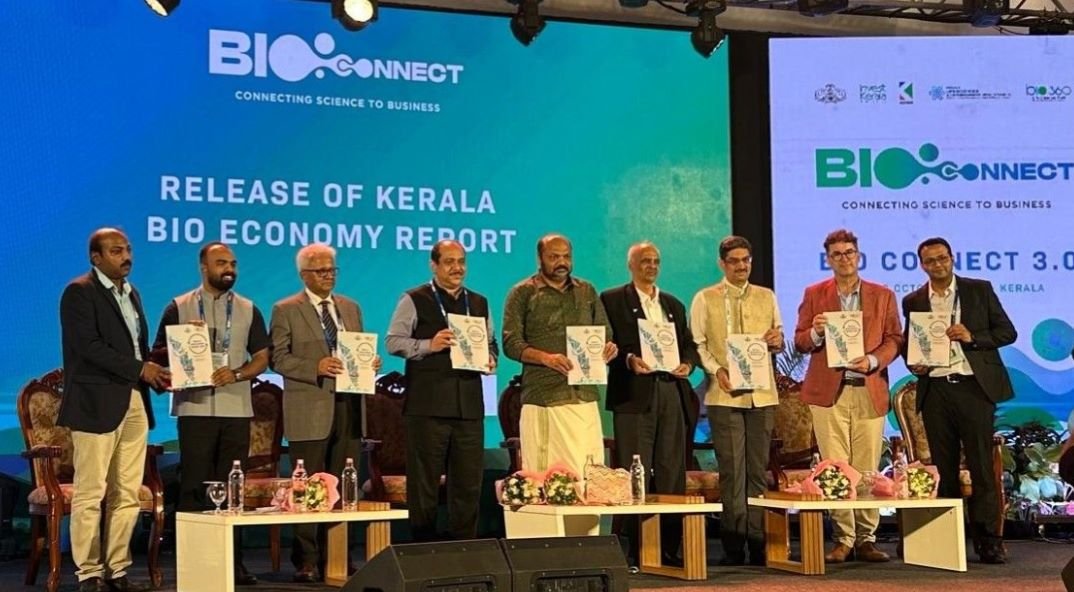Nanozymes: The Next Generation of Artificial Enzymes
July 31, 2025 | Thursday | Views | By Vijeta Sah, Senior Consultant, Ingenious e-Brain
Since their discovery in the early 2000s, nanozymes have gained attention for their durability under extreme conditions and versatility in applications ranging from medicine to industry. Made from materials like metal oxides, noble metals, and carbon nanostructures, nanozymes are redefining the future of catalysis and biochemistry.
The nanozyme market is set to soar, with its value estimated at $5.13 billion in 2024. Forecasts predict a remarkable climb from $6.54 billion in 2025 to an impressive $57.95 billion by 2034, driven by a robust CAGR of around 27.4 per cent during this period. This explosive growth underscores the transformative potential of nanozymes across diverse industries.
The healthcare sector is anticipated to dominate, driven by applications in diagnostics, drug delivery, and personalised medicine. Environmental and agricultural sectors are also witnessing increased adoption, with nanozymes being utilised for pollutant degradation and crop protection.
Regionally, North America currently leads the market, accounting for over 42 per cent of the revenue share in 2023, due to robust research and development activities and a well-established healthcare infrastructure. Asia-Pacific is projected to exhibit the fastest growth, fueled by increasing healthcare expenditure and the prevalence of chronic diseases in countries like China and India.
Key players in the nanozyme market include Novozymes A/S, Creative Enzymes, Cenyx Biotech Inc., Geno Technology Inc., Profacgen, and NanoComposix. These companies are focusing on developing innovative products with improved functionality and cost-effectiveness. Recent advancements involve the creation of hybrid and multifunctional nanozymes with enhanced catalytic properties, as well as smart nanozymes with responsive behaviour for real-time applications.
A New Frontier in Addressing Disease Burdens
Professor Yan Xiyun, a nanozyme trailblazer at the Chinese Academy of Sciences, is pioneering cancer therapies with antibodies targeting CD146. Meanwhile, a dynamic team from Nanjing University clinched the 2023 Dalton Horizon Prize for crafting powerful nanozymes that shine in cancer treatment, inflammation therapy, and wearable biosensors, pushing the frontiers of medicine and tech!
Researchers are advancing cancer treatment using carbon-based nanozymes (CNs) that precisely target tumours, enhancing therapy effectiveness. CNs have tunable electronic properties that boost catalytic efficiency and stability, outperforming traditional metal nanozymes in physiological conditions. For instance, graphene-based nanozymes maintain strong peroxidase-like activity under mild conditions, making them ideal for managing oxidative stress in tumour environments.
Carbon quantum dots (CQDs) outperform cerium oxide nanozymes in biosensing cancer biomarkers due to their superior sensitivity, stability, photoluminescence, and antioxidant properties. Their multifunctional oxidase and peroxidase-like activities make them especially effective in complex biological settings.
Ligands like antibodies or peptides attached to carbon nanozymes (CNs) enable precise targeting of cancer cells, reducing toxicity. CNs’ enzyme-like actions trigger reactions in tumours that produce cytotoxic agents to kill cancer cells, promising safer and more effective cancer treatments ahead.
Metabolic disorders like obesity, diabetes, and cardiovascular diseases disrupt key bodily processes and are linked to oxidative stress from excess free radicals. Current treatments often lack safety and effectiveness. Nanozymes, advanced nanomaterials that manage reactive oxygen species (ROS), show promise in improving treatment outcomes for these conditions.
Future Outlook
Nanozymes are a transformative and promising advancement in biochemistry and nanotechnology. They are revolutionising various fields, especially cancer treatment and metabolic diseases. However, nanozymes face key challenges such as selectivity, biocompatibility, and precise control over activity. Unlike natural enzymes that are exquisitely specific, nanozymes may catalyse unwanted side reactions. Current research is focused on surface modification, molecular imprinting, and hybrid structures to enhance selectivity and efficiency.
As the field advances, the capabilities of nanozymes continue to evolve. The convergence of AI-driven materials design, microfluidics, and bio-nano interfaces could push nanozymes toward clinical and industrial mainstream use. They pave the way for more effective, safer, and personalised therapeutic strategies, ultimately contributing to improved health outcomes on a global scale. With the ability to outperform natural enzymes under harsh conditions, nanozymes could redefine catalysis in the 21st century.
Vijeta Sah, Senior Consultant, Ingenious e-Brain









